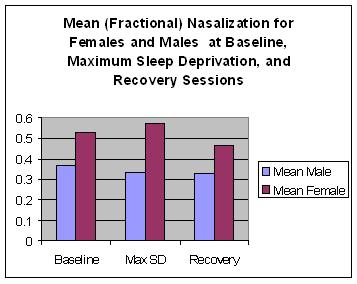Suzanne Boyce - boycese@ucmail.uc.edu
University of Cincinnati
Xinhui Zhou - zxinhui2001@gmail.com
Carol Espy-Wilson - espy@umd.edu
University of Maryland
Joel MacAuslan - JoelM@starspeech.com
S.T.A.R. Corporation,
Walter Carr - walter.carr@med.navy.mil
Dante Picchioni - dante.picchioni@us.army.mil
Naval Medical Research Center
Allan Braun - brauna@nidcd.nih.gov
National Institute on Deafness and Other Communication Disorders
Popular version of 1aSCb14
Presented Monday morning, May 18, 2009
157th ASA Meeting, Portland, OR
A nasal tone in speech is caused by sagging of a structure at the back of the mouth called the velum (whose tip is the uvula). This sagging is specifically controlled during normal speech production, so that sounds that are supposed to sound nasal (like m and n) do sound nasal, and sounds that arent supposed to sound nasal, like ah, ee, and oh, come out correctly. For many people, the velum and the muscles that surround it may loosen during sleep. This is part of what causes snoring and is implicated in sleep apnea. In previous work, we have found that sleep deprivation is associated with subtle changes in speech production (Boyce et al., SLEEP 08, 2008). We were interested in finding out specifically whether sleep deprivation affects velar sagging during speech production, making speech more or less nasal. It is important to note that most listeners dont notice subtle changes in speech articulation, being focused more on meaning than on sound.
We collected speech recordings from a group of 8 male and 9 female normal healthy speakers of American English (aged 18 to 30) in the following experiment: subjects were tested (1) after a full nights sleep, (2) after being kept awake for 30-40 hours, and (3) after recovery sleep for as long as they wanted. These speech recordings were then analyzed by a computer program that detects whether a vowel shows acoustic signs of nasality, and if so, by how much (Pruthi & Espy-Wilson, 2004). The results are reported as the fraction of nasality detected. Fig. 1 shows mean data for both groups in each condition.

Our results are interesting for two reasons. As the figure shows, there was a consistent difference between rested and sleep deprivation conditions. This difference was significant. Second, male and female groups seemed to have different patterns. Over all, more nasality was detected in female speech, even at baseline. Under sleep deprivation, the females showed more nasality relative to baseline, and the males showed less nasality relative to baseline. In addition, for females the level of nasality dropped in the recovery session. Note, however, that although all speakers showed a difference across conditions; two speakers in each group showed atypical patterns; two females showed decreases in nasality and two males showed increases.
In some ways, this result is not surprising. It has long been known that, in normal speaking conditions, males and females have different average patterns of nasality (Van Lierde et al., 2001 What is surprising, however, is that this pattern of nasality differences between sexes is intensified under sleep deprivation. Previously, differences in nasality for men and women have been attributed largely to stylethat is, that speakers sound more or less nasal in order to sound more masculine or sound more feminine. It is unlikely (although possible) that speakers intensify their style when they are feeling tired from sleep deprivation. It is more likely that speakers who actively minimize inter-individual biological differences in speech while well rested and alert, lapse in this effort when impaired from sleep deprivation. Thus, our data suggest that less nasality in males, vs. more nasality in females, comes from differences in the anatomy or physiology of the velum that are intensified under sleep deprivation. Differences of this nature may ultimately be useful in diagnosing and treating sleep disorders
Research supported by the National Institutes of Health.
References
Boyce, S., MacAuslan, J., Carr, W., Picchioni, D., Braun, A., Balkin, T. (2008). Automatic Detection of Changes in Speech Clarity During Sleep Deprivation, SLEEP 08, Baltimore, MD.
Van Lierde, K. M., Wuyts, F. L., De Bodt, M., Van Cauwenberge, P., (2001). Nasometric Values for Normal Nasal Resonance in the Speech of Young Flemish Adults, Cleft PalateCraniofacial Journal, March 2001, Vol. 38 No. 2, p. 112-118
Pruthi, T. & Espy-Wilson, C. (2004). Acoustic Parameters for Automatic Detection of Nasal Manner, Speech Communication, vol. 43, no. 3, pp.225-239.